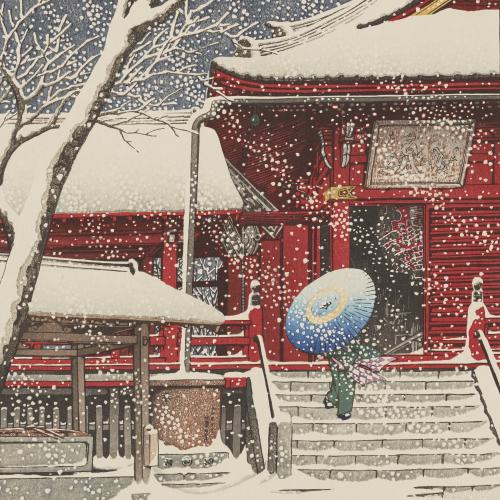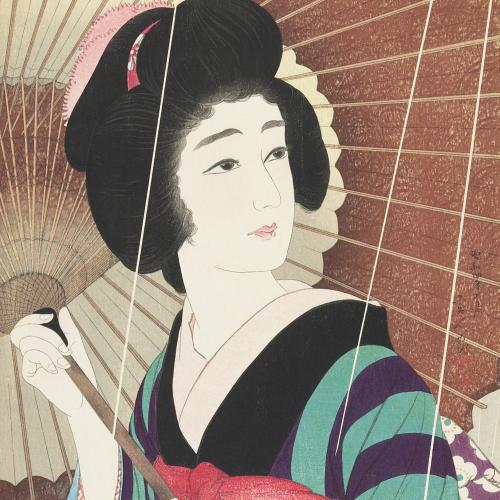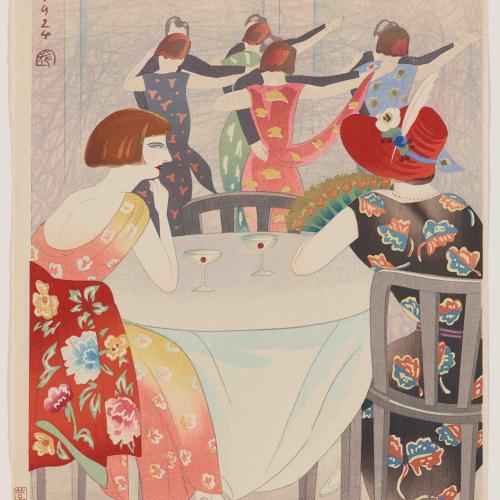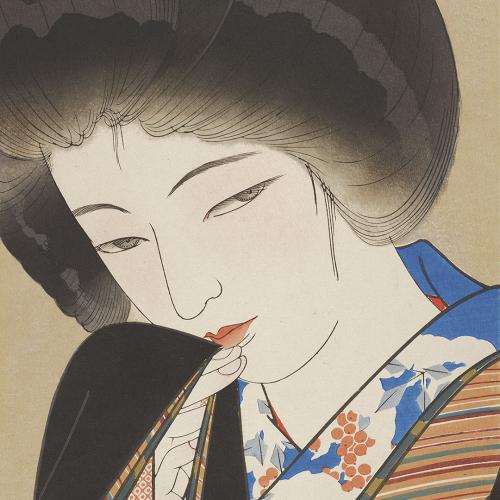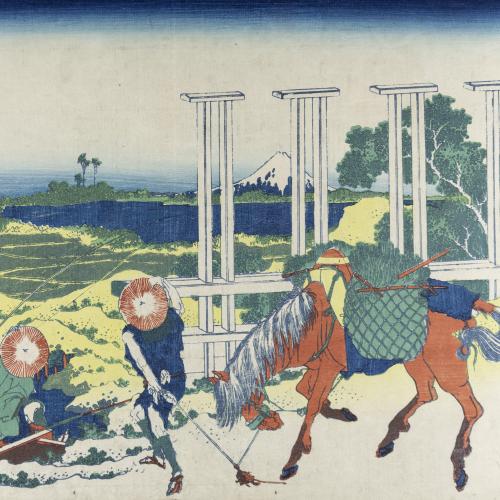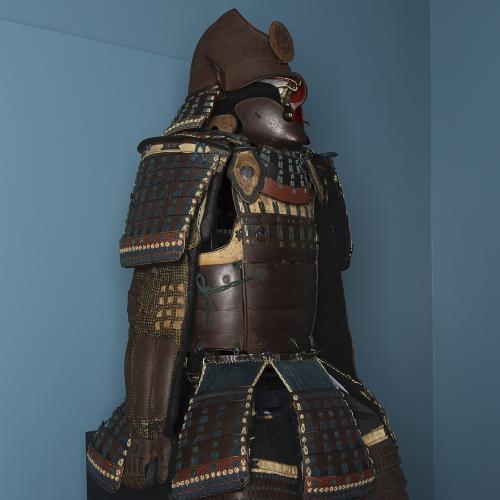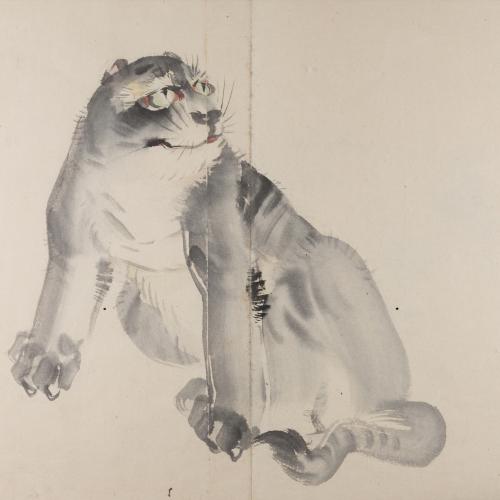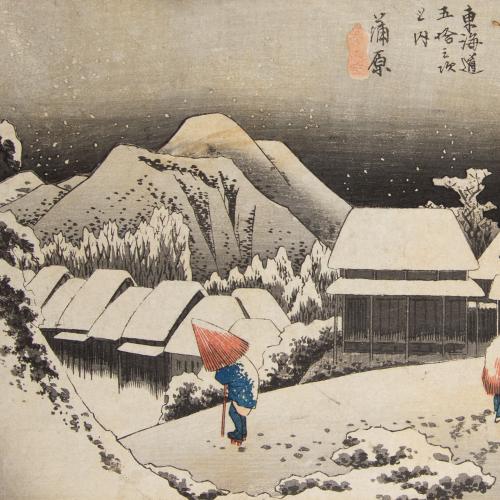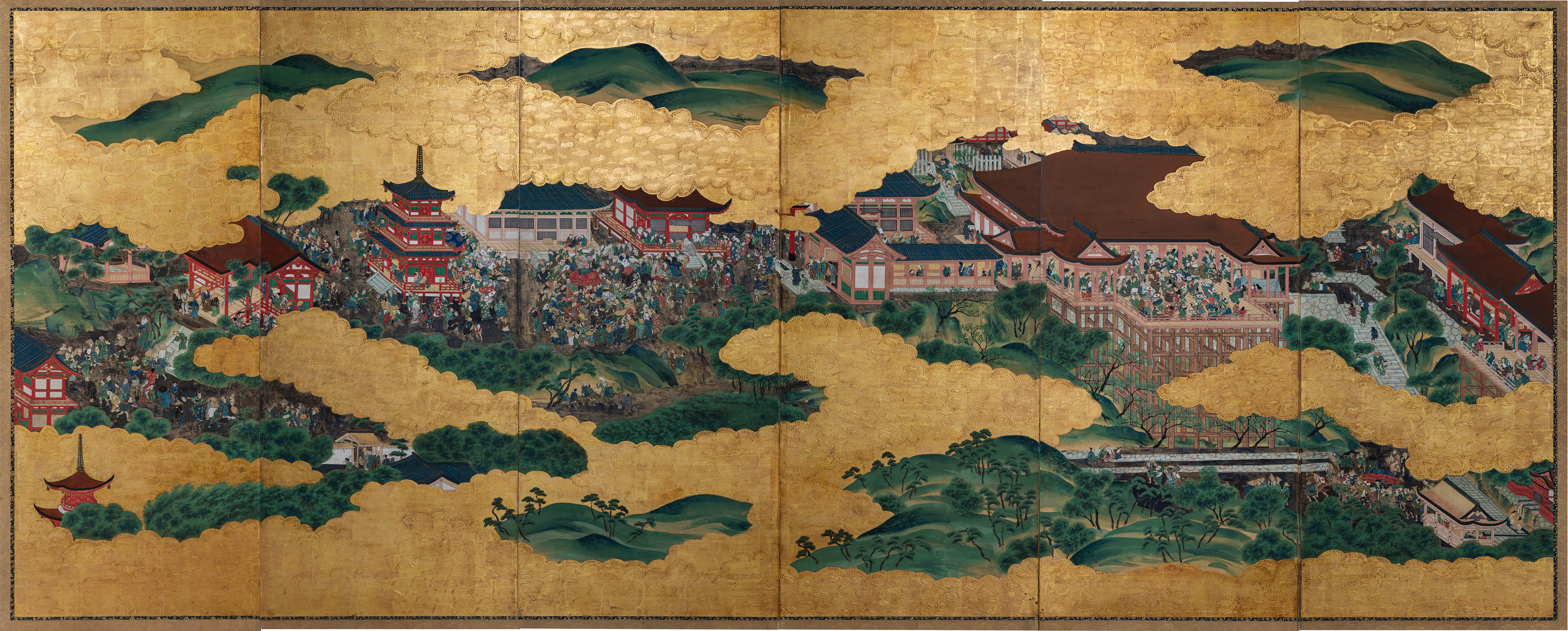
Throughout the Utah Museum of Fine Arts’ long history, we have hosted many traveling exhibitions from across the globe, but this is our first that focuses on art from Japan. The last Japanese show from our collection Innovation and Tradition in Japanese Woodblock Prints occurred back in 1999. Now, as February 2020 begins, the Museum is hosting not one but two installations: Seven Masters: 20th Century Woodblock Prints and Beyond the Divide: Merchant, Artist, Samurai in Edo Japan.
Seven Masters, organized by the Minneapolis Institute of Arts and toured by International Art+Artists, is the UMFA's first major Japanese traveling show. It looks at the world of shin hanga woodblock prints through the works of seven artists. Shin hanga literally means “new prints” and it was the idea of Watanabe Shoburzo, an early twentieth-century dealer who sold old woodblock prints by nineteenth-century artists Hokusai and Hiroshige. He felt people would also enjoy new works done in the traditional collaboration of artist, woodcarver, and printer. Watanabe chose the genres of actors, beauties, and landscape, which were popular themes in the Edo period of 1603–1868. The seventy-five artworks in the exhibition include the poetic landscapes of Kawase Hasui; beauty portraits from artists Hashiguchi Goyō, Itō Shinsui, Yamakawa Shūhō, and Torii Kotondo; and kabuki actors by Yamamura Toyonari and Natori Shunsen.
Beyond the Divide draws upon the museum’s own collection to present works from Edo period Japan. The title comes from the large screens found in Japanese that people would use to divide rooms to create private spaces. Merchant, artist, and samurai represent three of the social classes in Edo Japan’s strict class system, but all played a part in its art. Visitors will see in screens, paintings, prints, sculpture, and samurai arms and armor that this was one of the country’s most creative eras.
Many of these objects have not been on view in over twenty years, with a few that will be displayed for the first time ever at the UMFA since coming into the museum collection.
Unlike Seven Masters—which is prepared as a traveling show (labels and didactics come along with works ready to hang)—Beyond the Divide required the work of every department in the Museum. After I finished selecting the artworks and creating a checklist, museum educator Virginia Catherall and I worked on extended labels to provide information and context about the objects. In addition, we created a family guide to help children and their caregivers to engage with the show through fun questions and activities. As our development staff worked with individuals and foundations to secure sponsorships, our collections staff built mounts, pedestals, and cases for the objects. Many of our works on paper needed conservation ranging from minor touch-ups to some repair. The Ann K. Stewart Docent Conservation Fund provided support that allowed our new conservator Stacey Kelly to prepare the pieces for the show. Then, throughout much of January as we installed the pieces in the gallery, our graphic designers printed the labels and other in-gallery materials. Our marketing department then went into overdrive to advertise the show in traditional print and social media.
I am very excited that you will have the opportunity to visit and see both shows together. When you walk through the exhibitions, take time to notice the incredible detail in many of the works. In the Tale of Genji screens from Beyond the Divide, for example, the artist Kaiho Yusho II (1818-1869) painted interior screens that copied work of his great-great-grandfather Kaiho Yusho (1533–1615).
Luke Kelly is the associate curator of collections and antiquities for the Museum. His earliest interaction with the Museum’s Japanese collection came in 2002 when he researched and wrote labels for a set of samurai armor donated that year. Part of the label still survives in the new installation.

